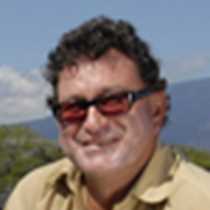Isabela Island
We did an early wake up call to visit Urvina Bay. I really like these early hikes on the islands. They give us the opportunity to be first on the Island as the animals start their morning feeding.
On Urvina we encountered an albino finch, many marine iguanas, and the colonies of coral that were exposed after the up lift of 1954 at Alcedo Volcano on Isabela Island. In the interior of our visit we found lots of land iguanas, most of them males, some finches and a Galápagos flycatcher.
In the afternoon we went to the southern part of Isabela Island to a place call Punta Moreno to walk on a lava flow of aa lava, which is more than 1000 years old .On some of it, lava tunnels that collapsed years ago formed ponds of brackish water, creating a unique system for birds to live and feed in the area, including Greater flamingos, white cheeked pintail duck and the endemic Galápagos Martin. We also saw candelabra cactus mixed up with the lava flows of Sierra Negra and Cerro Azul Volcano.
We did an early wake up call to visit Urvina Bay. I really like these early hikes on the islands. They give us the opportunity to be first on the Island as the animals start their morning feeding.
On Urvina we encountered an albino finch, many marine iguanas, and the colonies of coral that were exposed after the up lift of 1954 at Alcedo Volcano on Isabela Island. In the interior of our visit we found lots of land iguanas, most of them males, some finches and a Galápagos flycatcher.
In the afternoon we went to the southern part of Isabela Island to a place call Punta Moreno to walk on a lava flow of aa lava, which is more than 1000 years old .On some of it, lava tunnels that collapsed years ago formed ponds of brackish water, creating a unique system for birds to live and feed in the area, including Greater flamingos, white cheeked pintail duck and the endemic Galápagos Martin. We also saw candelabra cactus mixed up with the lava flows of Sierra Negra and Cerro Azul Volcano.




